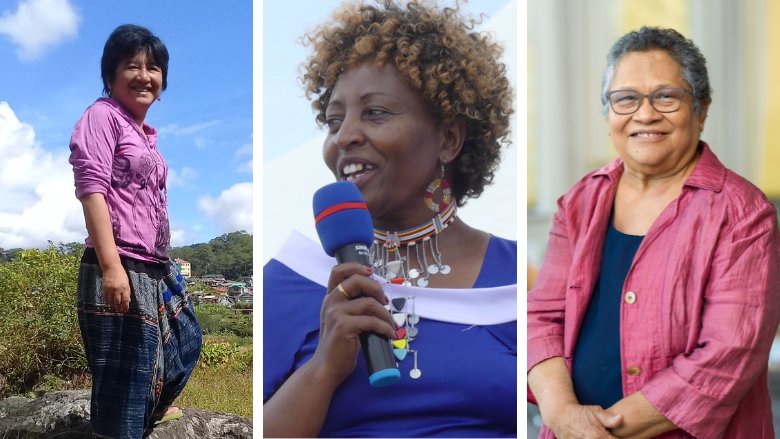Climate Change Threatening Cultural Identity
A changing climate has also led to greater uncertainty for those who depend most on nature, particularly Indigenous Peoples who safeguard an estimated 80% of the world’s biodiversity. An increase in extreme weather events and shifting climatic conditions has disrupted traditional Indigenous systems for food , leaving communities more vulnerable than ever. In fact, weather-related disasters were the key driver of acute food insecurity for 34 million people in 25 countries.
through their cultural identity and attitudes towards their elders and natural resources, say the women climate leaders. All three mentioned how climate change has undermined the ability of the elders to guide their peoples on where and when to hunt, fish, plant, graze animals, and gather essential seeds and plants.
“Everything is totally confused,” says Leina. “That system of elders organizing people is no longer there.” Cunningham echoes this sentiment, stating that “some of the younger generations are not being guided by their elders like they were before.”
Rising temperatures have led to greater uncertainty for those who depend most on nature, particularly Indigenous Peoples who safeguard an estimated 80% of the world’s biodiversity.
Many Indigenous women have turned to commercial activities to provide food for their families, exposing them to the fluctuations in external market factors that they do not control to meet basic needs. When COVID-19 hit, many communities that relied on the market for food security faced far greater fragility. In the Cordillera, women are planting and selling potatoes, beans, and tomatoes when their traditional food crop was rice. In the Miskito societies, they are selling fish – a job that was traditionally undertaken by men. Perhaps most detrimentally, women in Baragoi are subdividing and selling plots of their land as a means of securing cash income.
As Indigenous Peoples begin to view their natural resources as a commodity to be bought and sold, they lose their sacred connection to the land and their sense of duty to maintain and preserve it, leading them to settle in urban areas, according to Cunningham and Carling. This migration renders obsolete the spaces that Indigenous Peoples once gathered to exchange knowledge, ideas, and customs and build the system of mutual cooperation behind Indigenous customs and norms. Migration to urban areas and the consequences of a changing climate have undermined those traditions, they say.
Exacerbating these issues, Indigenous women are largely left out of the decision-making process, despite their role as guardians of the environment – and despite their exceptional vulnerability to climate change.






